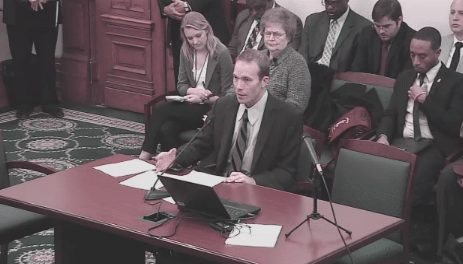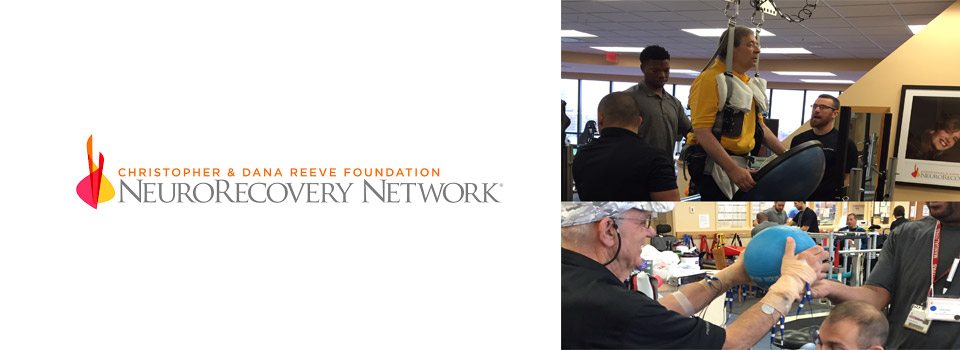NeuroHope Bill to Fund Recovery Programs Passes Senate
In the months since our campaign for NeuroHope was launched, we've been turning heads locally about the need to address long-term treatment and wellness programs for people recovering from and living with traumatic injury in Indiana. I've shared our vision with healthcare executives, insurance leaders, politicians, and media outlets in an effort to help change the paradigm of neurologic recovery in the state.
One of the individuals who has taken our story to heart is Senator Pat Miller (R-Indianapolis), who also chairs the bipartisan Senate Health and Service Providers Committee. We've been working closely with Senator Miller in an effort to amend a law, that if successful, can help fund specialized programs that offer long-term, activity-based therapy and wellness services. Indiana has a fantastic law already in place that helps fund neurologic resesarch. This amendment would let specialized programs be eligible to apply for grants from the exisiting fund as well.
On Wednesday, I testified before the committee at the Indiana State Capitol. I shared my story, explained the void in care, and described how this bill has the potential to enhance the research it already funds and change the lives of those living with paralysis in the process.
The bill passed committee 11-0, and now will move to the Senate floor. First hurdle cleared!
UPDATE: On January 29th, the bill passed the Indiana Senate a resounding 47-0! A clean bipartisan sweep! This brings us halfway home. In March, it will move to a committe for approval to send to the House of Representatives.
My testimony is posted below. The first half tells my personal recovery story, the second half explains the the potential of the bill.
Four and a half years ago I broke my neck in an accident and suffered a spinal cord injury that left me completely paralyzed from the neck down. It may come as a surprise as you see me walk into this room, but after my accident doctors weren’t sure if I would ever re-gain any movement. They prepared my family and me for the scenario that I might be a total quadriplegic for the rest of my life.
Initially (as I was going into surgery and trying to process that I was paralyzed) the only glimmer of comfort that I had, was knowing that I would receive the best standard of care. Between Methodist, IU-Health, the Rehabilitation Hospital of Indiana, and other hospitals, there are many fine facilities here in Indianapolis. But, it soon became apparent that in spite of the care these facilities provide in the early stages of traumatic injury, there is a HUGE void they are unable to fill AFTER discharge, which often comes after a matter of weeks. Insurance runs out quickly, no matter how great the plan.
I was discharged from the Rehabilitation Hospital of Indiana after 8 weeks. I fought for and received two extra weeks due to the severity of my injury, and the early progress I was showing. But, at discharge I was still completely paralyzed except for small movements in my fingers and right foot, and I left the hospital on a stretcher. Many bodily-functions were not intact. I didn’t have the ability to feed or bath myself. I was still completely caregiver dependent. Leaving the rehab hospital meant the daily physical and occupational therapy I had been receiving, and desperately needed to continue, had to stop. I remember that being the single most devastating blow for me. Incredibly, insurance would pay for a $50,000 blow-powered wheelchair, but extended therapy was denied. All I could do was return for a limited number of outpatient therapy visits a few times per week, a total of 30, before they too expired. I went to a nursing home instead.
My situation is not unique. This is the way it is for everyone recovering from traumatic injury. Neurologic injury takes months and sometimes years of intense rehabilitation to maximize recovery and a lifetime of maintenance.
Six months after my accident – still wheelchair bound – I was fortunate to travel to a specialty outpatient clinic in Utah formed precisely to help fill this need. This facility not only provided long-term access to rehabilitation, but also had specialized resources and equipment for neurologic recovery that was not offered anywhere in Indiana. My mother (who was my caregiver) and I were able to stay in a small apartment in Salt Lake City for nearly 2 years. I spent 3 to 4 hours in rehab everyday, until I recovered to the point where I am today.
Everyone will not be as fortunate in recovery as I was. Every spinal cord or brain injury is different. But, everyone needs continued care after inpatient and outpatient visits expire.
Now, I’ve organized NeuroHope of Indiana, a 501 © 3 public charity dedicated to bring this patient-centric standard of care to Indiana, and to help put more injured individuals on a path toward recovery, independence, and a return to the workforce.
Senator Miller’s bill speaks to a very good law already in place in Indiana, and has the potential to greatly ENHANCE the research that it already funds.
The current law regulates the Indiana Spinal Cord and Brain Injury Research Fund that was established in 2007. This fund is a godsend. The fact that our state recognizes the importance of addressing traumatic injury puts Indiana ahead of many others in a changing paradigm of neurologic research and recovery.
The fund receives about 1.5 million dollars per year from vehicle registrations. Under the current law, this money can only be used for research purposes. Last year 9 researchers received grants for various projects, and this incredible work needs to continue. Unused money in the fund rolls over to the next year. There is currently more than 4.5 million dollars available in the fund. Senator Miller’s bill will continue to fund research programs. However, it will also allow the board that administers the fund to consider grants for specialized long-term therapy PROGRAMS.
These programs will INCREASE clinical research opportunities by potentially providing an ENVIRONMENT for research to take place, while treating patients in the process. A sandbox can be created for educators, students and researchers.
The current 9-member board has been an outstanding steward of the fund. They are experienced and well qualified to evaluate the grant applications to ensure that good stewardship continues. The language in this bill helps ensure that only specialized programs would be eligible for application.
It’s an exciting time in neurologic research. The last 12 months have seen breakthroughs in laboratories and therapy gyms around the world, and medical organizations are aggressively seeking funds to continue research that they hope may bring them closer to a cure. Directly linked to that research is the need for an incredible amount of rehabilitative therapy that in the current health care system is difficult to receive.
The packets you have been provided show a model of this changing paradigm in neurologic recovery. Today’s current model consists of only two stages: Inpatient stay followed by limited outpatient visits. That’s it.
The continuum of care should involve a 4-stage process. We need a 3rd stage of extended rehabilitation and activity-based therapy that focuses on re-educating the nervous system, and we need a 4th stage of long-term health and wellness that is critically important for those of us living with disabilities. This is an element that is just as important as the recovery stage, and cannot be overlooked. Individuals less fortunate in their recovery need wellness programs in place to maintain their bodies and all the complications that come hand-in-hand with paralysis. They need to prevent pressure sores, maintain muscle and bone integrity, and more, to promote their quality of life and keep them out of the health care system. Programs like this are working in other communities – I’ve toured and met with the leaders of 7 of them – and they will work here as well.
Also in the packet, you will find the most recent report of the Indiana SCI and Brain Injury Fund and a description of the program.
Finally, the packet includes a report from the Utah Department of Health that shows the potential positive impact of this bill. The state of Utah has set up a similar fund for therapy and treatment and has had great success in returning individuals to work and school, and improving their overall quality of life. Some of the grants went to the unique facility that I attended, and to which I owe so much of my recovery.
The future of neurologic recovery relies on innovate research AND long-term programs for individuals outside the boundaries of traditional care. This bill will put the board in position to address both.






